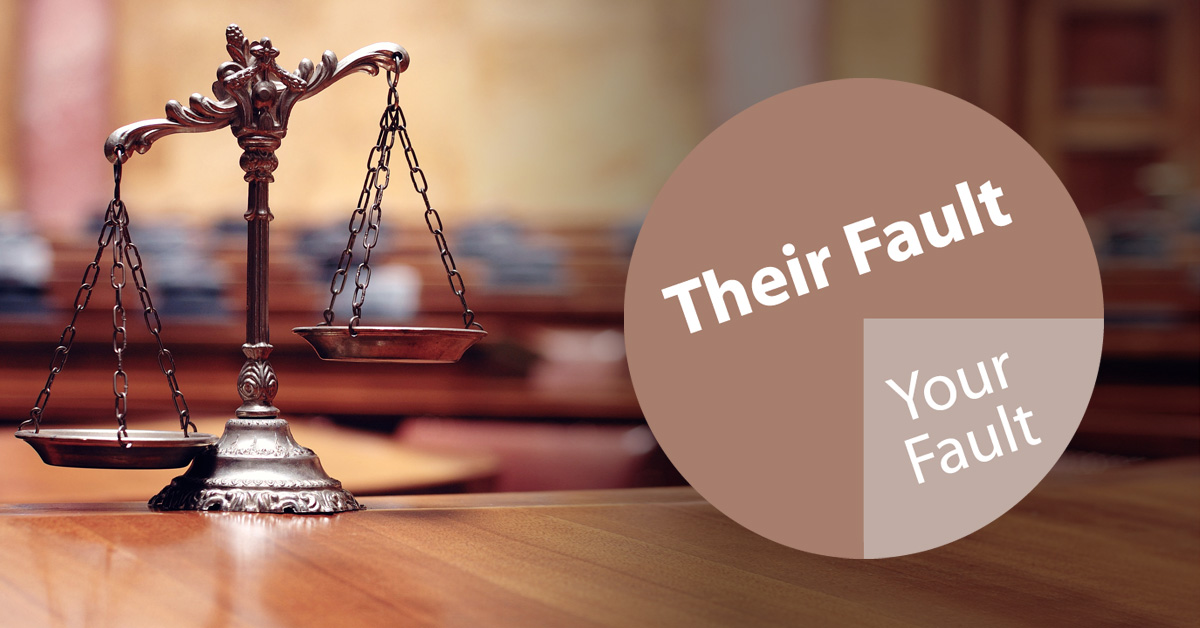 I was hit in a car accident, but the other driver wants to blame me. Who’s at fault?
I was hit in a car accident, but the other driver wants to blame me. Who’s at fault?
In the busy state of Texas, people are constantly going their own directions to get where they need to be. Many are in a rush to get to work, drop the kids off at school/day care, or arrive at an appointment on time. The craziness of everyone’s schedules can lead the driver to be negligent in some way, such as answering a phone call on their cell phone, or eating on the go. Along with many other common causes, these distractions can be one of the reasons why two drivers may be at fault for their collision. For example, a police officer gave one driver a ticket for speeding and gave a ticket to the other driver for reckless driving. This type of situation evolves into a comparative fault issue.
Depending on how the accident happened, it can become difficult to determine who caused the accident, which is how these cases can involve a Texas doctrine called comparative negligence. Section 33.001 of the Texas Civil Practice and Remedies Code refers to this concept as proportionate responsibility. When one party (plaintiff) brings a personal injury claim against another party (defendant), the jury will determine the percentage of negligence (if any) of each party based on the evidence presented to them.
For example, Vehicle 3, in a hurry to get to an appointment, drives 15 mph above the speed limit. Vehicle 3 neglects to pay attention to the upcoming traffic and crashes into Vehicle 2 propelling Vehicle 2 into Vehicle 1 who is in front of Vehicle 2. Vehicle 2 is partially responsible for the accident because it was driving too close behind Vehicle 1. When a fact pattern like this is brought to the insurance company’s attention during the pre-litigation phase of the case, the other party’s insurance adjuster will determine the percentage of responsibility for each party by evaluating information, such as a police report, eye witnesses, photos, and statements from each party.
If the case is brought to trial, the jury will assess and evaluate the presented evidence (such as eyewitness and/or expert testimony, photographs, videos, audio recordings, police reports, medical records, etc) in their determination of who was at fault for the accident and what was their percentage of negligence.
In Texas, the first question a jury answers in a personal injury claim is what percentage of fault does the defendant have (if any) for an accident and what percentage of fault does the plaintiff have (if any). This proportioning of fault is relevant when the jury goes to the second question they have to address: what are the plaintiff’s damages? This is the second question a Texas jury answers: in monetary terms, what are the plaintiff’s damages?
If the jury finds the defendant 80% at fault and the plaintiff 20% at fault in the first question and they find that the plaintiff suffered $1,000 in damages, then the plaintiff is awarded $800. The plaintiff’s damages are reduced by the percentage of fault the jury places on them. If the jury finds the defendant 100% responsible for the accident, the plaintiff receives 100% of the damages determined by the jury.
Texas follows a modified rule for comparative fault known as the “51% bar rule” meaning if the claimant, the person seeking recovery of damages, is more than 51% responsible for the accident, then the individual may not recover any damages. If the plaintiff is responsible for 51% or less, then the plaintiff’s award will be reduced by the percentage they are negligent for. For example, if the trial court awards the plaintiff $100,000 in damages, the plaintiff can only recover $70,000 in damages if the plaintiff was 30% responsible for the accident.
As you can see comparative negligence cases can be very complex cases to handle, especially if the parties involved were partially responsible for the accident. That is why it is crucial to have an experienced attorney represent you to handle this matter. Eric Reyes has been litigating personal injury cases for 25+ years. He has disputed a large amount of comparative negligence claims during his career. As a Board Certified attorney in Personal Injury Trial Law and Civil Law he has the experience to ensure the best outcome for your case. Please give our office a call to learn more about how we can help you.
 Fort Worth Injury Attorney Blog
Fort Worth Injury Attorney Blog

